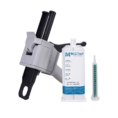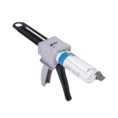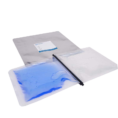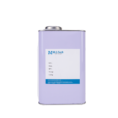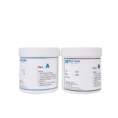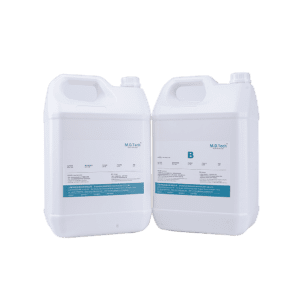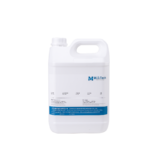MDSI 6250 Silicone Optical grade High transparency potting compound
- Silicone High transparency potting compound
- Excellent heat resistance
- Long-term protection against UVA and UVB rays
- Non-yellowing
- Fast cure and quick release
- Extremely accurate molding results
- Lighter than glass
MDSI 6250 High transparency Silicone Optical grade potting compound.
It is mainly designed for manufacturing optical device modules, and can be used for injection molding optical lenses and optical waveguide coupling to reduce scattering loss, resist the influence of environmental pollution, moisture, shock, vibration, etc., and can maintain its optical properties, mechanical properties and electrical properties for a long time under a wide range of temperature, humidity and harsh environmental conditions.
Typical properties of material
| Pre-curing properties | ||
| Composition | 6250 A | 6250 B |
| Appearance | Colorless clear fluid | Colorless clear fluid |
| Viscosity, mPa·s(25 ° C) | 4000-6000 | 4000-6000 |
| Specific gravity, g/cm3(25 ° C) | 0.99 | 0.99 |
| Allocation Method | Injection molding | |
Material manipulation using craft
| Temperature | 25 ℃ | 28 ℃ |
| time | 100 minutes | 70 minutes |
Typical curing conditions
24hr@25℃, or 60 mins@80℃. If adhesion is required, the curing condition is 3hrs@100℃.
Typical properties of the material after curing
Curing condition: 60mins@80℃
| Hardness,shore A | 50 | |
| Tensile strength, MPa | 5.5 | |
| Elongation | 100% | |
| Tear strength, N/mm2 | 3 | |
| Refractive index,25 ° C | 1.4120 | |
| Transmittance,% | 450nm@1mm | > 90 |
| Volume resistivity, ohm.cm | 2*1015 | |
| Dielectric constant,1MHz | 3.8 | |
| Dielectric loss,1MHz | 0.04 | |
| Ion content, ppm | Na+ | 0.2 |
| K+ | 0.1 | |
| Cl+ | 0.9 | |
It is mainly designed for manufacturing optical device modules, and can be used for injection molding optical lenses and optical waveguide coupling to reduce scattering loss, resist the influence of environmental pollution, moisture, shock, vibration, etc., and can maintain its optical properties, mechanical properties and electrical properties for a long time under a wide range of temperature, humidity and harsh environmental conditions.
Precautions
- The substrate surface should be clean and dry. Heat can be applied to remove moisture from the substrate surface; The substrate surface can be cleaned with naphtha, methyl ethyl ketoxime (MEK), or another suitable solvent. Solvents that dissolve or corrode the substrate should not be used, and solvents that have residue should not be used.
- Keep accurate weighing into a clean glass container and mix well and evenly. When mixing with high-speed mixing equipment, the heat generated by high-speed mixing is likely to increase the temperature of the glue, thereby shortening the use time.
- Remove bubbles under a vacuum of 10mmHg. Generally remove the bubbles before dispensing the packaging material.
- In most cases, polysiloxane is suitable for working for a long time at -45 ° C to 200 ° C, and can withstand 350 ° C for a short time. In specific use, it is best to test according to actual requirements.
- Before the material is not cured, it can not contact organic matter containing N\P\S, can not contact ionic compounds such As Sn\Pb\Hg\Bi\As, can not contact active compounds containing acetylene \ vinyl, can not contact peroxide, can not contact water vapor and alcohol compounds. When these substances reach a certain concentration, they will hinder the curing of the material, which is manifested in three phenomena: it has been in a flowing state and is not cured at all, and there is a thin layer on the surface of the base material in a fluid or RAS state, and there is a smile of bubbles on the contact surface of the base material. Should be fully tested before use.
- When heating and curing, a replaceable hot air oven should be used to prevent the accumulation of trace hydrogen generated during the curing process and the risk of explosion.
Related products
Color: Transparent
Color: Transparent
Color: Transparent
Color: Transparent







